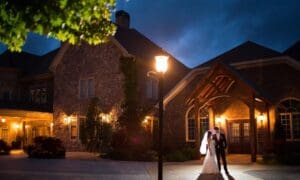There are two Bibles that sit, always untouched, on the fireplace mantle in our living room. They are delicate and old, yellowed pages are falling from them, the black tabs denoting the different books mostly gone.
Should our house catch fire in the middle of the night, these two Bibles and Mama’s ancient red pin cushion are the material possessions that would mean the most for me to snatch away from harm.
They are Daddy’s Bibles and what they are and how they look says so much about him. Let me share a few things.
They are both black. Daddy firmly believed in only black Bibles and scoffed at any other color. When I was a kid, I had four different colors which, as absurd as this sounds, I coordinated to my dress each Sunday. Now, I even have one in hot pink, a gift from the wonderful folks at Zondervan when they published “What Southern Women Know About Faith.”
Daddy, though, stood firm in what he believed. He was black or white. They was nothing gray ever about him. “A Bible should always be black,” he lectured. “Because out of the darkness came the light.”
Both Bibles are King James. In his 78 years of life, he never read another version. While some argue that it is the hardest version to understand, it wasn’t to Daddy. With no more than an eighth grade education, he understood it plainly verse by verse, chapter by chapter, book by book. His language, like the King James, was poetic and beautiful to hear. It reminds me of reading where Harper Lee said that all writers should read the King James Bible because of the gift of its language.
These are Scofield Reference Bibles. Daddy lived and died by it, studying it daily for over 50 years. Cyrus Scofield, an American, dissected each scripture, explaining it carefully in footnotes. When Scofield’s reference Bible, published by Oxford University Press, first appeared in the early 20th century, it was considered quite innovative because, among other things, it had a cross reference system.
Neither Bible, though obviously well read, has one mark in it. Daddy fully believed that you didn’t mark up the Bible. He was much too reverent for that. We have Tink’s mother’s Bibles, too, and they are just as worn but hers have so much writing in them, you couldn’t get another word in. It is precious to see her thoughts written down and to be guided by her Godly wisdom.
Both Bibles were gifts to Daddy. I read the inscription from one longtime friend who had gifted the Bible to Daddy, four days after his son was saved at a church that Daddy once pastored. I chuckled as I read the hand-written note and said, “Everyone knew exactly what kind of Bible to buy Daddy – black, King James, Scofield reference.”
I’m not sure that Daddy ever bought himself a Bible. Maybe once when he was a young man. But for all the years I knew him, people gave him Bibles, always nice and expensive ones. It is fitting, I believe, that his favorite black King James Scofield came from a well-known moonshiner that he often bailed out of jail. You see, Daddy was a righteous man who rose up out of the mountain renegades. You never forget your people.
In one of the Bibles, Mama took it upon herself to write some family history in it. I was reading about grandparents and great-grandparents when I noticed the death date of my daddy’s father. He died in June, 1962 but Mama listed the date in JULY, 1962. This is how genealogies get all mixed up. One wrong date in a Bible and everything else falls into uncertainty. But, more than that, it’s pretty significant.
I am the rare possessor of a Bible that has an untruth in it.
[Ronda Rich is the best-selling author of “What Southern Women Know.” Visit www.rondarich.com to sign up for her free weekly newsletter.]












Leave a Comment
You must be logged in to post a comment.